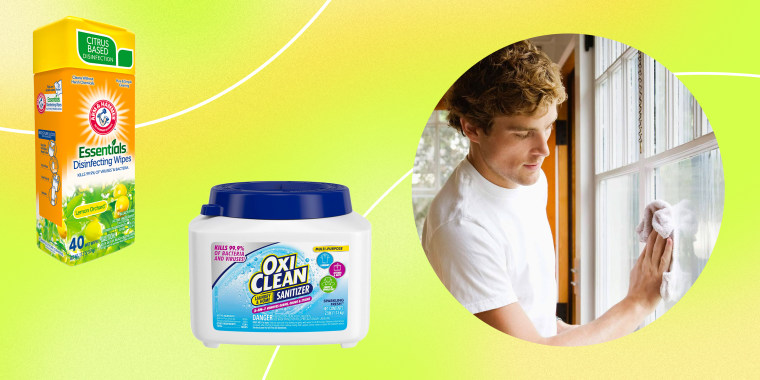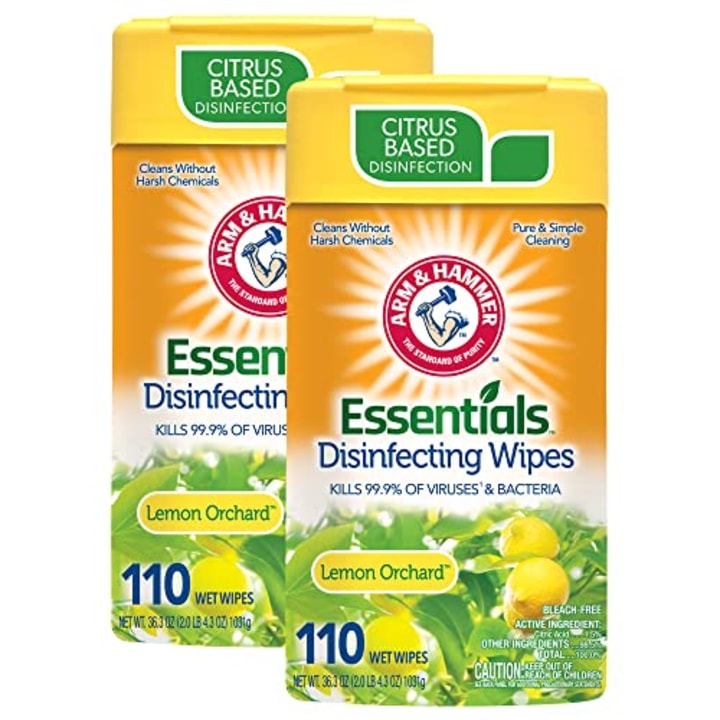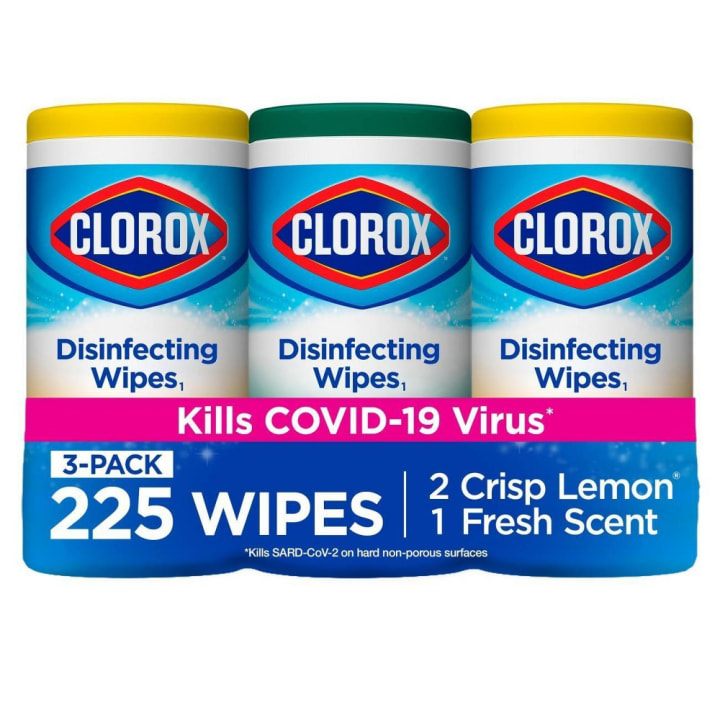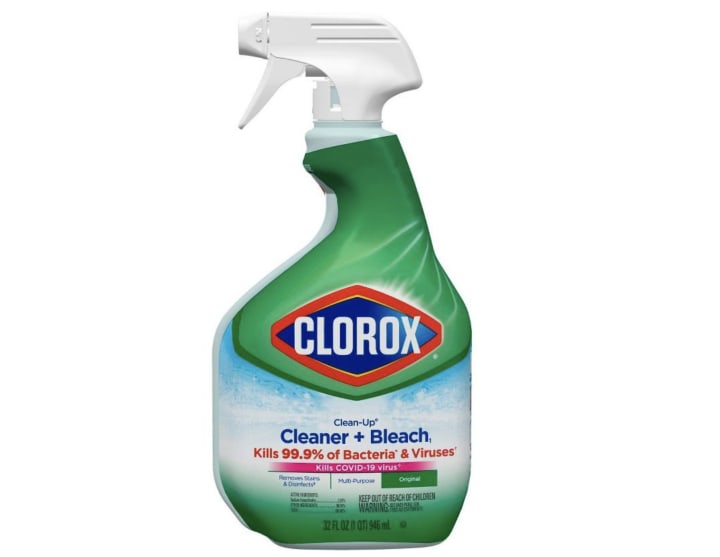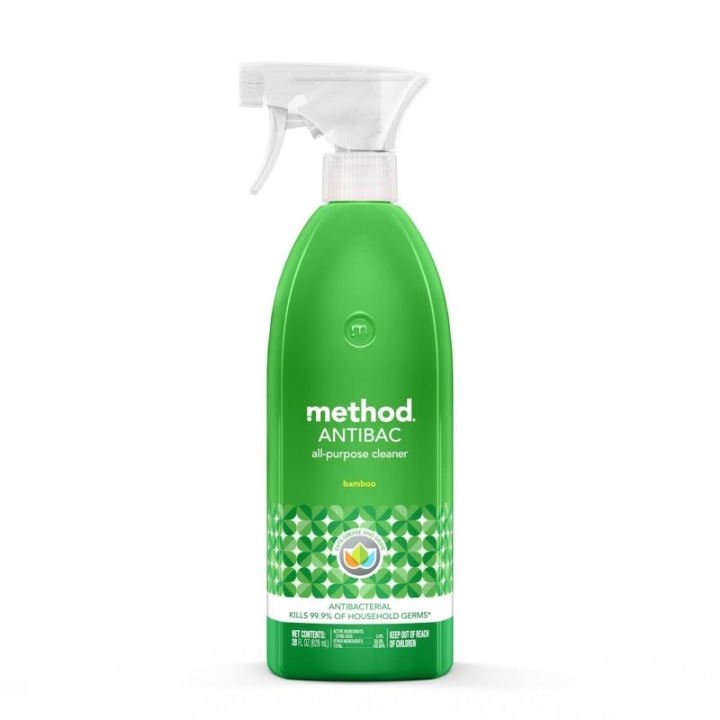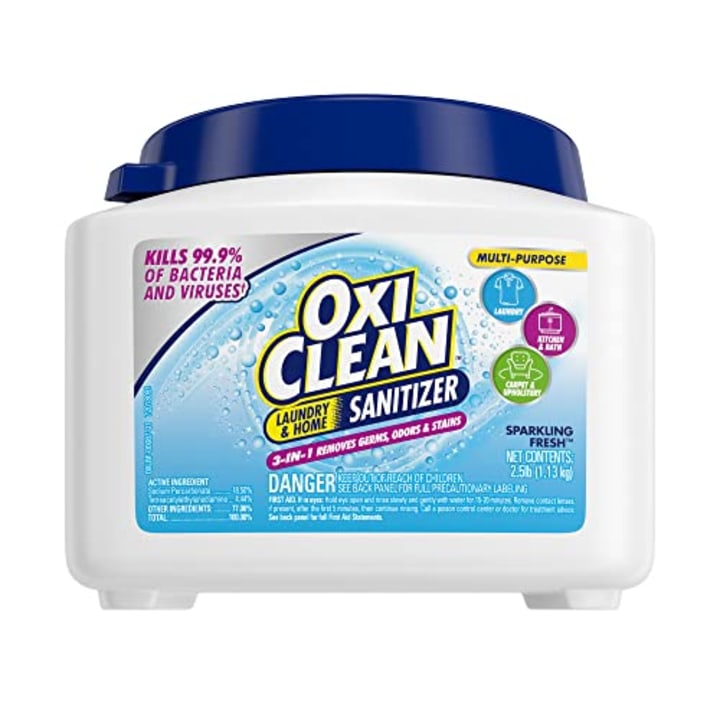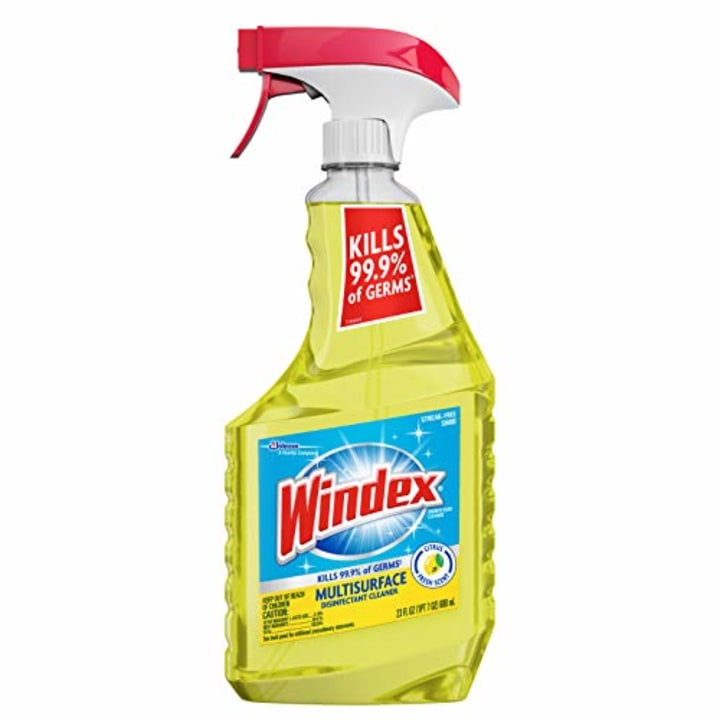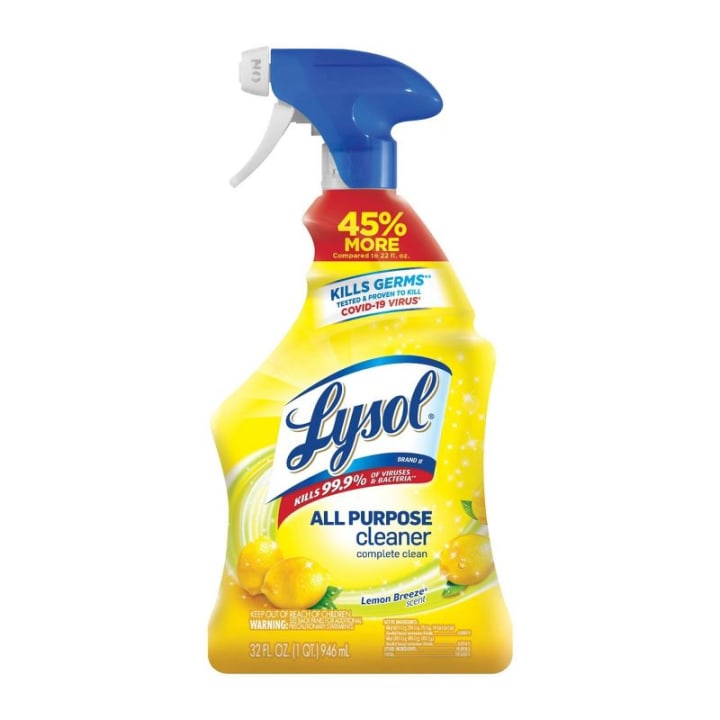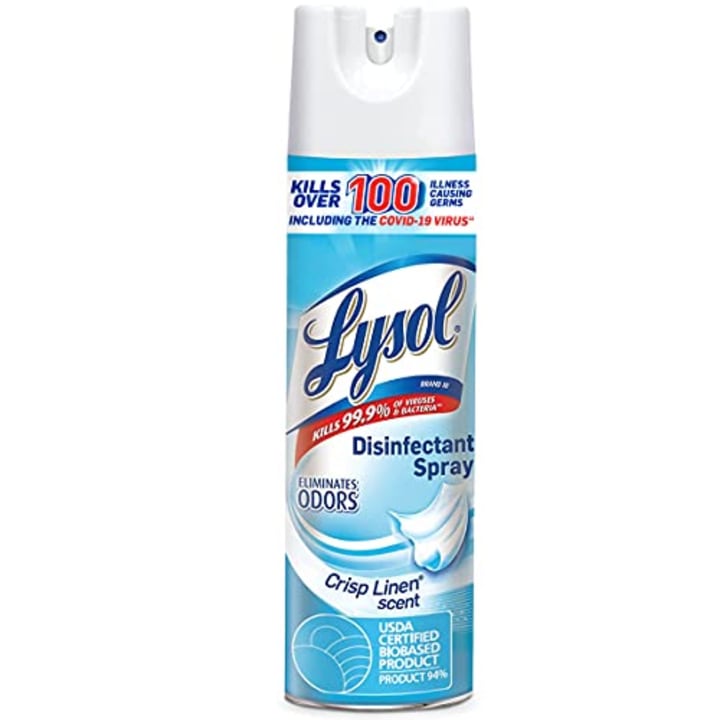Among the products you use to clean your home — from vacuums to laundry detergent — you likely keep a bottle or two of disinfectant on hand, especially if you’re concerned about viruses like Covid-19 or monkeypox. When the pandemic began in early 2020, people were buying disinfectants like Lysol and Clorox en masse, though the Centers for Disease Control and Prevention eventually clarified that the risk of contracting Covid through surfaces is generally low. But after the U.S. Department of Health and Human Services declared monkeypox a public health emergency this August, interest in disinfectants rose once again. Touching objects, fabrics and surfaces used by someone with monkeypox can spread the virus, though research has shown that it “primarily spreads through close, personal, often skin-to-skin contact with the rash, scabs, lesions, body fluids, or respiratory secretions of a person with monkeypox.”
SKIP AHEAD What are disinfectants? | How to disinfect surfaces
With that being said, disinfectants are helpful to have at home, but they’re not everyday, all-purpose cleaners and should not be used as such, experts told us. Disinfecting — a practice the CDC says “kills most germs on surfaces and objects” — should be done at home “when someone is sick or if someone is at a higher risk of getting sick due to a weakened immune system.” Otherwise, basic cleaning with soap and water is usually effective.
“A lot of times, people think they need to use everything in the kitchen sink to clean,” said Bill Wuest, a chemistry professor at Emory University. “But it’s important to be cognizant that there are different levels to cleaning — from soap and water to disinfectants — for different jobs.”
We talked to experts to learn more about when to use disinfectants and how. We also rounded up a list of disinfectants registered with the Environmental Protection Agency as recommended by the CDC.
The best disinfectants to kill viruses and bacteria
When rare or new viruses cause outbreaks of disease, “there may be few if any disinfectants that have been tested and registered for use against that specific pathogen,” the EPA says. For these situations, the EPA created the Emerging Viral Pathogen (EVPs) guidance, which it says “allows disinfectant manufacturers to voluntarily submit data to EPA demonstrating a product’s efficacy against difficult-to-inactivate viruses.”
Covid and monkeypox are currently listed as emerging viral pathogens by the EPA, and you can browse a list of disinfectants proven to be effective against them on the agency’s website. We sourced the disinfectants below from that list, choosing options widely available at larger retailers like Amazon, Target and Walmart. We only recommended disinfectants safe to use at home and highlighted multi-purpose cleaners you can use in many rooms. All the disinfectants below can be used on hard, non-porous surfaces like sealed wood, stainless steel, glass, hard plastic and more.
While shopping, Wuest said to keep in mind that although big name brands like Lysol and Clorox may be what you’re most familiar with, other options are just as effective, so long as they’re EPA-registered and you follow products’ directions accordingly. This is important to remember if a product goes out of stock or there’s limited supply from some brands.
Arm & Hammer Essentials Disinfecting Wipes
Arm & Hammer’s Essentials Disinfecting Wipes are available in two scents: renewing rain and lemon orchard. The brand says they’re designed to kill 99.9% of viruses and bacteria. Each container has a snap-close lid and comes with 110 single-use, disposable wipes.
Clorox Disinfecting Wipes
Clorox says its disinfecting wipes kill 99.9% of viruses and bacteria. The wipes come in a fresh scent and a crisp lemon scent. There are 75 single-use, disposable wipes in each container.
Clorox Clean-Up Cleaner + Bleach
This disinfectant spray from Clorox — which comes in a 32-ounce bottle — contains bleach, a chemical that can kill germs as well as remove color from fabrics, according to the brand. The brand says the spray kills 99.9% of bacteria and viruses.
Method Antibacterial Cleaner
You can purchase the Method Antibacterial Cleaner in bamboo, citron and wildflower scents. The brand says it kills 99.9% of household germs as well as clear away grease. The disinfectant comes in a 28-ounce bottle that’s made of recycled plastic, according to the brand.
OxiClean Powder Sanitizer
In addition to disinfecting hard non-porous surfaces like floors, tubs and showers, kitchen counters and more, OxiClean’s Powder Sanitizer can disinfect laundry —the brand includes directions for both on its packaging. OxiClean says the powder kills 99.9% of bacteria and viruses, and you can purchase it in a 2.5-pound or 4.5-pound container.
Scrubbing Bubbles Multi-Purpose Disinfectant Spray
Scrubbing Bubbles says this disinfectant spray kills cold and flu viruses as well as other germs like bacteria, mold and mildew. It comes in a 12-ounce can you shake before you press a button on top to dispense the spray.
Windex Multi-Surface Cleaner and Disinfectant Spray
Windex’s disinfectant spray shouldn’t leave behind streaks when you use it, according to the brand. Clorox says the spray, which has a citrus scent, kills 99.9% of germs, viruses and bacteria. It comes in a 23-ounce or 32-ounce bottle, and when you finish a bottle of the disinfectant, you can keep the spray nozzle top and purchase refill bottles separately.
Lysol All Purpose Cleaner and Disinfectant Spray
Beyond killing 99.9% of viruses and bacteria, this spray can also rid surfaces of grease and soap scum, according to Lysol. It’s available in a lemon breeze or cherry blossom and pomegranate scent and comes in a 32-ounce bottle.
Lysol Disinfectant Spray
Available in crisp linen, lemon breeze and early morning breeze scents, Lysol Disinfectant Spray kills 99.9% of viruses and bacteria when used as directed, according to the brand. Unlike other disinfectants on our list, you should allow surfaces to air dry after spraying them with this product. The spray comes in a 19-ounce aerosol can.
What are disinfectants and when to use them
Before reaching for disinfectants to wipe down your countertops or scrub your bathroom, it’s important to understand what disinfecting actually entails, and how it differs from basic cleaning and sanitizing. Whether you’re disinfecting, sanitizing or cleaning directly impacts the products you should use, too.
- Disinfecting “kills viruses and bacteria on surfaces using chemicals,” according to the EPA.
- Sanitizing “kills bacteria on surfaces using chemicals,” but it is not intended to kill viruses, according to the EPA.
- Cleaning “removes dirt and organic matter from surfaces using soap or detergents,” according to the EPA.
The EPA only registers cleaning products if they sanitize or disinfect — sanitizers and disinfectants have to meet their own respective testing requirements and clear a certain bar for effectiveness set by the EPA. Cleaning products that simply clear away or remove dirt from a surface, water or air are not regulated by the agency.
So how do you decide if you need to use a disinfectant, sanitizer or cleaner? The CDC includes detailed information on its website about when you should disinfect, sanitize and clean, but generally, experts told us cleaning with soap and water — or an all-purpose cleaner — is sufficient for most situations. “You don’t need to use a full-fledged arsenal of cleaning agents all the time,” said Wuest. “Soap and water is an effective way to clean surfaces.”
“Sanitizing or disinfecting to reduce the spread of disease at home is likely not needed unless there are sick people in your home,” according to the CDC. Dr. Sharon Nachman, chief of the division of pediatric infectious diseases at Stony Brook Children’s Hospital, echoed this statement, noting that if you or someone in your home is ill, you’ll want to practice good disinfecting techniques and use the appropriate products, which you can get specific directions about per illness from the CDC — the agency has web pages on how to disinfect surfaces for Covid and monkeypox, for example. Nachman emphasized that disinfectants you can buy over-the-counter are suitable for cleaning your home, even if someone is sick. “There’s no reason to buy any industrial cleaners,” she said.
How to disinfect surfaces
Experts said it’s crucial to follow the exact directions listed on a disinfectant’s packaging while using the product to ensure it works as it’s designed to. There are two specific steps to keep in mind, both of which experts said most people don’t know about or actively do — and not doing them can potentially reduce the efficacy of a disinfectant.
- Before you disinfect an area, you need to clean the surface with soap and water, experts told us. “Impurities like dirt may make it harder for chemicals to get to and kill germs,” the CDC says.
- After you apply disinfectant to a surface, it needs to sit before you wipe it away. This is called contact time, according to the CDC. “Most people use disinfectant wipes or spray and immediately wipe surfaces down after. But you need to have some contact time for it to be effective and work properly, which is the biggest unknown out there about disinfectants,” Wuest said. “The chemicals in disinfectants need time to do what they need to do to disengage the bacteria or viruses.” The CDC says you can find the exact contact time for each product in the directions printed on its package, and the agency noted that the surface you’re disinfecting should stay wet during the entire contact time to make sure germs are killed.
Safety tips for using disinfectants
The CDC lists a handful of safety guidelines on its website to review before using a disinfectant — these include reading a product’s label to learn how to dispose of it and finding out what type of surface you can use it on. Experts also highlighted some safety tips we should be aware of:
- Wash your hands after you use a disinfectant. The chemicals in disinfectants can dry out your hands, Nachman noted, and you also don’t want them on your hands if you’re touching food.
- Never mix disinfectants together or with other chemicals and cleaning solutions, Wuest said.
- If you opt to disinfect using a diluted bleach solution you make at home with water and bleach, be sure to read the CDC’s guidance beforehand and follow the exact directions on the product’s package. Wuest said be sure to remember that “you cannot store diluted bleach solutions indefinitely because it’s not effective for very long,” which is why he recommended making solutions as you need them. The CDC says to “make a new diluted bleach solution daily. Bleach solutions will not be as effective after being mixed with water for over 24 hours.”
Meet our experts
At Select, we work with experts who have specialized knowledge and authority based on relevant training and/or experience. We also take steps to ensure that all expert advice and recommendations are made independently and with no undisclosed financial conflicts of interest.
- Bill Wuest is chemistry professor at Emory University.
- Dr. Sharon Nachman is chief of the division of pediatric infectious diseases at Stony Brook Children’s Hospital.
Catch up on Select's in-depth coverage of personal finance, tech and tools, wellness and more, and follow us on Facebook, Instagram and Twitter to stay up to date.
